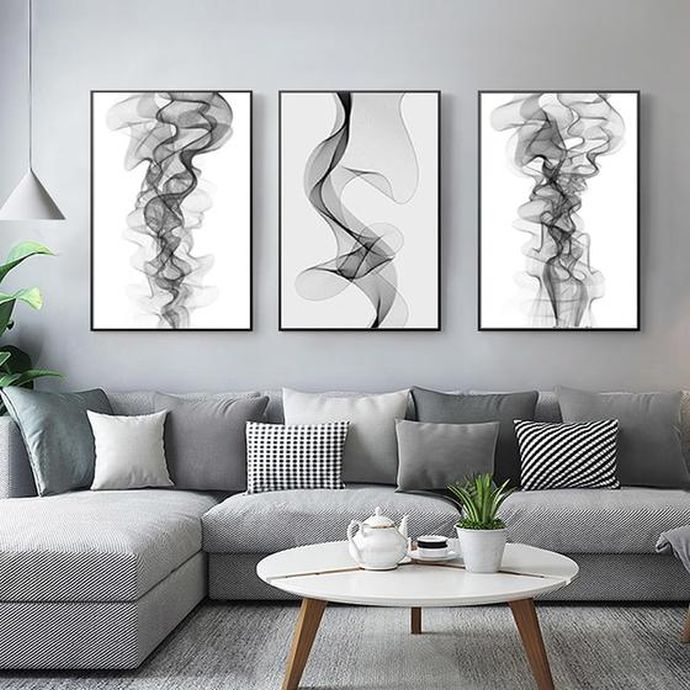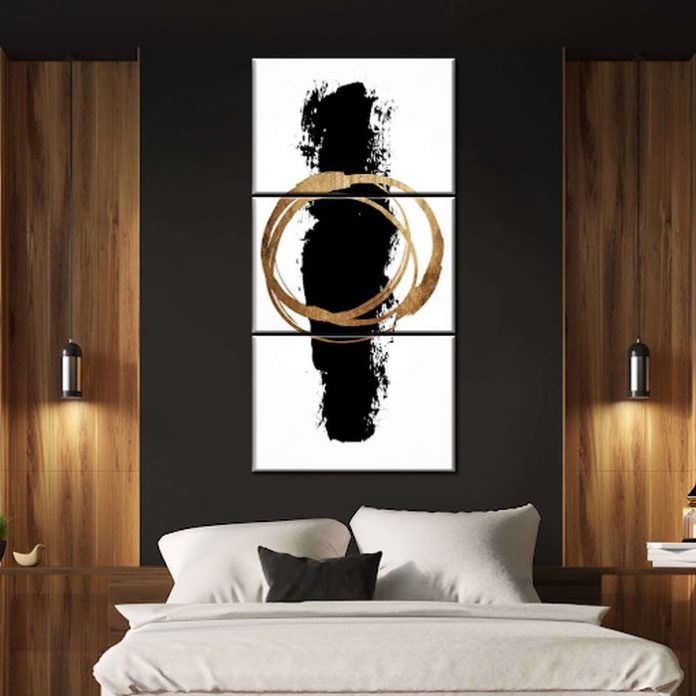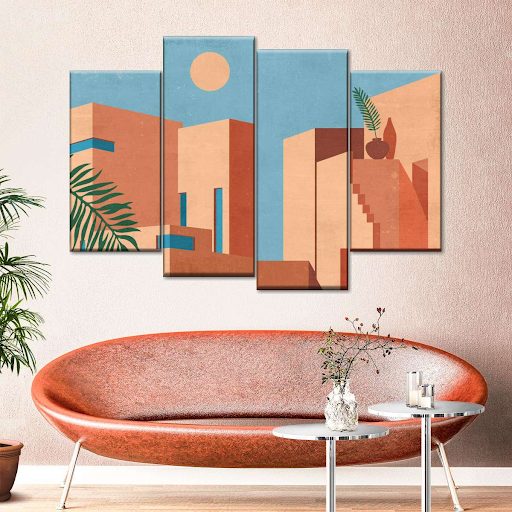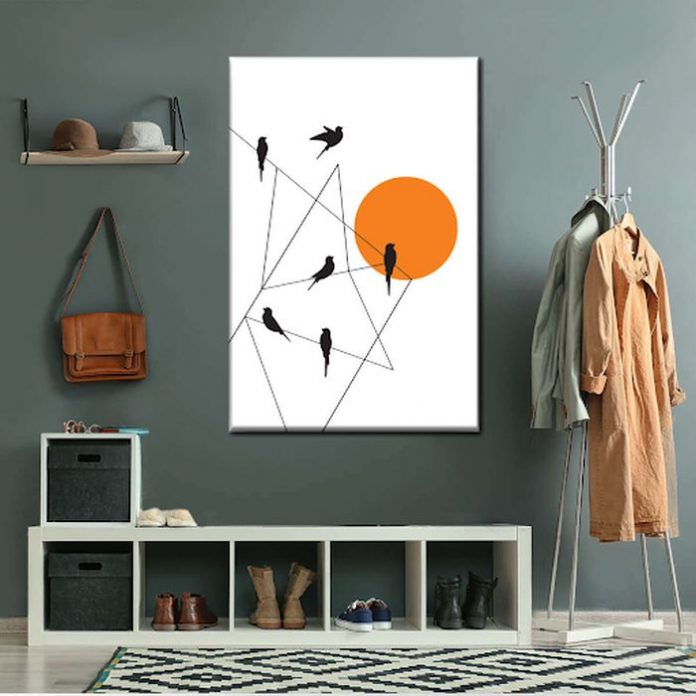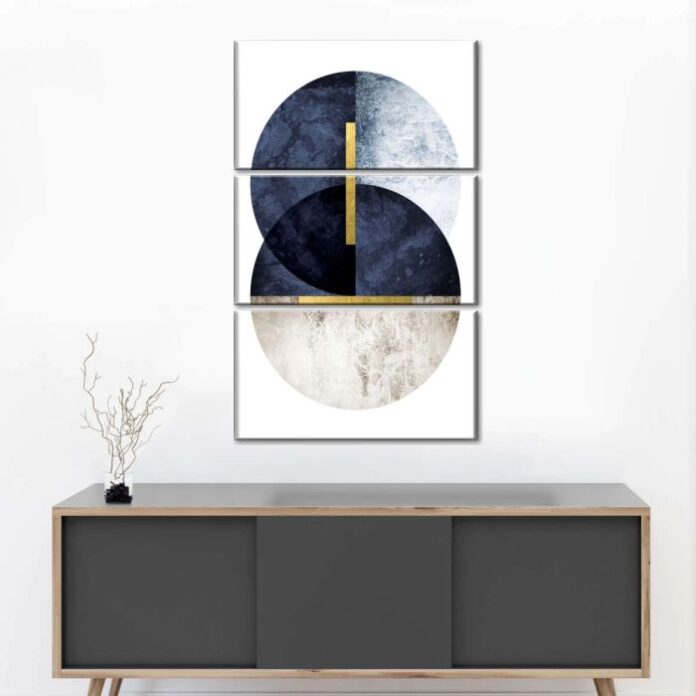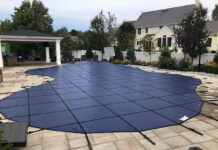One of the most recent raves in interior décor is the aspect of style using natural elements, earthy tones, marble and wooden furniture, and more. They’re also a minimalist approach to texture, color, and style of design. This could be said to be connected to minimalism design style, which is said to involve the use of bare essentials to create beautiful yet simple and uncluttered space. the main mantra of minimalism interior style is beauty in simplicity. Minimal decoration and austerity are the main approaches in minimalism, which means functional furniture, geometrical shapes, soothing, and a minimal color palette. You can find some stunning minimalist wall arts here.
Minimalism is like returning to the basics when it comes to interior decorations. It is essentially about omitting the unnecessary and focusing on the essential details. There is the misconception that minimalism equates to blandness and bareness. This is farther from the truth because, in the place of many pieces, varied color, and much clutter, you have high-quality pieces that are used sparingly with plenty of appealing floor spaces.
Brief History of Minimalist Design
The most popularly widely accepted fact is that minimalist design emerged in the 20th Century as a reaction to rejecting the idea of a highly decorative style of design. Designers have traced the history of minimalism to when it gained prominence by the Dutch De Stijl movement of 1917 to the early 1930s. just like De Stijl, painters rebelled against abstract-expressionism art and used only the rudimentary geometric shapes in their works. The focus of simplicity spilled into consumer products; whereby simple minimalist consumer products gained ground. An example is Ikea the Swedish furniture company, making furniture that is simple and easy for the everyday person to assemble even without the aid of instructions.
The minimalist design shares a connection with Modern Architecture, Bauhaus Architecture, Brutalist Architecture, and mid-century modern design. Many were doing minimalistic designs but some were the trendsetters. Buckminster Fuller; an American designer who is best known for his architectural design of the geodesic dome. Dieter Rams; who is quite popular when it comes to minimalism. Rams pursued minimalist concepts in his design for consumer products, computer appliances, radios, calculators, and much more. He was known for his ten principles of good design. He stated that good is innovative, useful and functional, self-explanatory, beautiful, unobstructed, honest, detailed, long-lasting, environmentally friendly, and simple.
Characteristics of Minimalism
- Less is more
- The focus is on functionality
- Everything has a purpose and a place
- Lack of excessive ornamentation and decorations
- Simple lines
- Use of materials such as concrete, wood, marble, and glass.
- Use of space and natural light.
- Monochromatic and limited color palette.
What comes to mind with most when trying to emulate the minimalistic approach in design, is that they will use less furniture and limited color but go wide with elaborate wall arts in shades and shades of color. This tends to throw off the design and style. There are so many ways to design a minimalistic style interior and ways to use beautiful and high-quality minimalist wall arts to support the design. Instead of getting and placing different wall art pieces on the walls of a home, you place one large spectacular wall art piece on the wall, making the wall a statement in itself and also decluttering. You may think minimalist design is easy but the truth is a simple and interesting space is rather difficult to achieve. One needs to understand the place of necessity and functionality in design to be able to pull it off. Even after that, you need to understand texture, tones, and colors.
The major and biggest struggle with minimalism is ensuring the design conveys warmth and a cozy feeling, rather than bland and bare.
Essentials to minimalism in design
Lighting
The use of natural light in minimalism is essential. The approach makes use of natural light to portray warmth in the space. it is also important to note that lighting will help with shades and tones.
Neutral Colors
One of the most important features of minimalism design is the choice of a neutral color palette, pastel colors, whites, and creams. Most minimalists make use of white walls which is a current trend. Neutral color is a safe bet in minimalism. Many feel that minimalists use only whites, rather they make use of soft and light natural tone colors like cold white, gray, softened with nude tones.
Textures
There are so many ways to play with texture in minimalist designs, with the combination of light and flat surfaces. For instance, pair wood and marble with metal, pair faux fur with concrete, and much more. Like throw pillows, rugs, and cable-knit blankets that will add life to the interior without taking the minimalist design. Incorporating the use of textiles will help add texture and warmth to space.
Flat Surfaces
Instead of the use of different shapes, think flat surfaces that reflect light and give the impression of space.
Open Space
The vital point of minimalism is space and an open floor plan. Think open spaces that easily blend the rooms and maximize natural lighting. The use of open space involves the use of artfully place furniture and wall arts, basically the barest essentials to create an interesting as well as elegant style of design. Practically and functionality are the main goal.
You need your space to project serenity and peace, the best way to achieve that is by incorporating the concept of minimalism into your design and style. The main concept behind minimalism is “Less is more”. Minimalism has become a modern lifestyle that many are now emulating, with the mindset that decluttering your homes and living a simplified lifestyle with help handle the overwhelming world. Minimalism is an influential visual style that prioritizes the essentials in a home space by stripping the interior design to its barest function by using neutral colors, simple designs with fewer ornaments to achieve a pure form of elegance and class.
If you are looking to design your home space in a simple, yet elegant way with a lot of open space, then minimalist designs and wall arts will help you achieve that.
